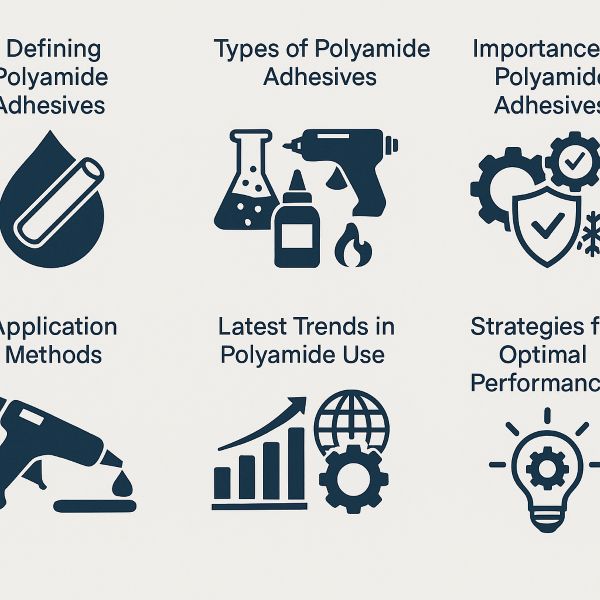
Defining Polyamide Adhesives
Types of Polyamide Adhesives
Durability in Extreme Conditions
Importance of Polyamide Adhesives
Application Methods
Latest Trends in Polyamide Use
Strategies for Optimal Performance
Frequently Asked Questions (FAQ)
Polyamide adhesives are high-performance bonding agents derived from polymers containing amide linkages. Known for their strength, flexibility, and resistance to heat and chemicals, they are widely used in applications where durability is crucial. These adhesives are engineered to maintain strong bonds even in fluctuating temperatures or chemically aggressive environments, making them a preferred choice in challenging industrial settings.
Polyamide adhesives come in multiple types tailored to application-specific needs. Hot melt variants offer fast setting and are commonly used in Automotive or assembly lines. Others are designed for flexibility—ideal for textiles or elastomeric applications—while heat-resistant types are favored in automotive or high-temperature environments. Each formulation provides unique benefits to meet varied engineering demands.
The key advantage of polyamide adhesives is their exceptional durability in extreme environments. These adhesives remain effective under high heat, humidity, and exposure to chemicals, all while preserving mechanical strength and elasticity. This makes them indispensable in sectors such as automotive, electronics, and aerospace, where long-term reliability is essential. Their resistance to environmental degradation supports consistent performance across a wide range of demanding applications.
Polyamide adhesives are critical in modern manufacturing due to their ability to provide long-lasting, resilient bonds. Whether joining dissimilar materials or withstanding rigorous conditions, these adhesives ensure structural integrity. They are commonly applied in sectors that demand both mechanical strength and thermal stability, enabling product designers and engineers to meet performance and safety requirements without compromising efficiency.
Polyamide adhesives can be applied through various methods, depending on the project scale and requirements. Manual application offers precision for small-scale tasks. Spray systems enable uniform distribution for mid-sized jobs. Automated dispensing systems are ideal for high-volume industrial production, ensuring consistent results. Regardless of the method, correct surface preparation and temperature control are essential for maximizing adhesive performance under stress.
Recent developments in polyamide adhesive technology reflect increasing demand for high-performance bonding in extreme environments. Manufacturers are innovating with formulations that offer improved thermal resistance, chemical resilience, and processing efficiency. Sustainability is also a growing focus, with efforts to develop low-emission, recyclable, or bio-based polyamide systems. These trends are particularly significant in automotive, electronics, and green energy applications.
To ensure optimal results, it's important to select the appropriate polyamide adhesive based on operational demands—such as thermal load, mechanical stress, or substrate compatibility. Match the adhesive type with the correct application method, and monitor processing parameters like temperature and curing time. Proactive evaluation of environmental conditions and joint requirements will help you implement a bonding solution that delivers maximum reliability and longevity.
What are polyamide adhesives?
They are thermoplastic adhesives made from polymers with amide linkages, known for high durability and flexibility in harsh conditions.
What types of polyamide adhesives are available?
Hot melt types for fast-setting applications. Flexible and heat-resistant variants are also available.
Why are polyamide adhesives important?
Their ability to maintain strong bonds under stress, heat, or chemical exposure makes them essential in industries like automotive, aerospace, and electronics.
How do polyamide adhesives perform in extreme environments?
They retain bond strength and flexibility under high temperature, humidity, and chemical exposure, ensuring product reliability.
What application methods are used?
Methods include manual application for small tasks, spray systems for uniform coverage, and automated dispensers for industrial-scale use.
What trends are shaping the polyamide adhesive market?
Trends include enhanced thermal and chemical performance, and development of sustainable, recyclable, or bio-based adhesives.
How can I ensure optimal bonding performance?
Use adhesives that align with your material and environmental requirements, apply them correctly, and monitor processing parameters closely.
Which polyamide adhesives work best in automotive settings?
High-temperature and vibration-resistant polyamide adhesives designed for industrial-grade durability are recommended for automotive use.